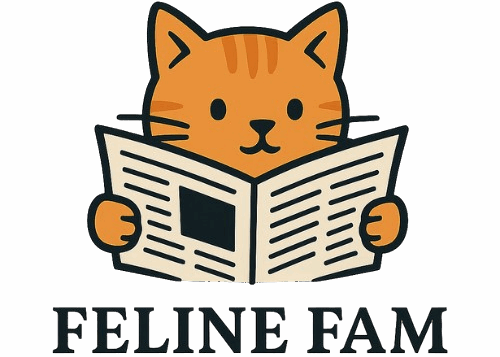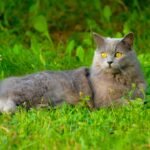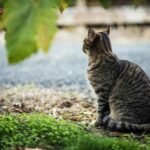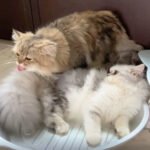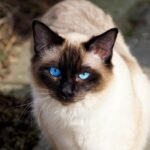Selecting the perfect feline companion during your golden years requires careful consideration. While cats often make wonderful pets for seniors, some breeds demand energy, attention, and physical capabilities that might prove overwhelming.
The wrong choice could transform what should be peaceful companionship into daily stress and exhaustion. Picture this: you’re expecting a gentle lap cat, but instead you find yourself chasing a hyperactive feline around your home at all hours. Understanding which breeds might be challenging can save you from an incompatible match and guide you toward the right furry friend for your lifestyle.
Bengal Cats – The Wild Side You Might Not Want

Bengal cats are extremely adventurous and energetic, ranking among the most intelligent breeds. When bored, they’ll make their displeasure known through destructive behaviors like getting into cabinets, destroying tissues, and hiding your belongings. These striking spotted beauties require constant mental stimulation throughout the day.
They need stimulation for most of the day to prevent destructive behaviors. Their intelligence works against busy seniors, as these cats can learn to open doors, turn on faucets, and access areas you’d prefer they avoid. For someone seeking peaceful companionship, a Bengal’s relentless energy and mischievous nature might feel more like having a demanding toddler than a relaxing pet.
Savannah Cats – When Size and Energy Collide

Savannah cats possess an unmatched wild presence among domestic breeds. These large cats require extensive exercise, play, and interaction. Their impressive jumping ability allows them to reach heights up to eight feet, making no surface safe from their exploration.
Despite their recent domestication, Savannah cats’ instincts constantly drive them to explore, track and hunt. Teaching them to play fetch or leash-training for long walks helps expel their extra energy. The financial burden alone can be staggering, with F1 generation kittens typically costing $15,000 to $20,000 or more. Their wild heritage means they never truly settle into the calm, predictable routine many seniors prefer.
Maine Coon Cats – Gentle Giants with Hidden Demands

The Maine Coon was considered the largest domestic cat breed until the Savannah’s introduction, remaining the largest non-hybrid breed. Males typically weigh between 13 and 18 pounds, with females ranging from 8 to 12 pounds. Their impressive size creates unique challenges for senior owners.
Their long, fluffy coat requires dedicated grooming and monthly baths. Regular brushing prevents tangling and removes loose hair that would otherwise cover furniture. Imagine trying to lift and maneuver a twenty-pound cat for grooming or veterinary visits. Their playful nature and need for interaction, while endearing, can become exhausting when you’re dealing with such a substantial animal requiring constant coat maintenance.
Siamese Cats – The Vocal Attention Seekers

Siamese cats thrive on attention and affection, drawing energy from family playtime and conversation. They need entertainment and want their families to participate in their games. These beautiful cats are notorious for their demanding vocal nature and constant need for interaction.
This vocal feline loves attention and isn’t shy about demanding it either – following you around and ‘talking’ to you. They become depressed if left alone for too long. For seniors who value quiet moments or have hearing sensitivities, a Siamese’s persistent meowing and attention-seeking behavior can become overwhelming. Their separation anxiety means you’ll rarely have peaceful alone time.
Sphynx Cats – High-Maintenance Hairless Wonders

Despite their hairless appearance, Sphynx cats are extremely energetic and want to play all day and night long. Providing plenty of activities ensures they get necessary exercise. Their lack of fur creates unique care requirements that many seniors find challenging.
They enjoy climbing cat trees, chasing string toys, and direct human interaction. Without enough stimulation, their mischievous side emerges, potentially causing household chaos. Beyond their energy demands, Sphynx cats require special skin care, temperature regulation, and protection from both sun and cold. This breed transforms pet ownership into a full-time commitment that can overwhelm unprepared seniors.
Abyssinian Cats – The Perpetual Motion Machines

Abyssinians are anything but low-key and docile, keeping owners constantly on their toes. They’re extremely inquisitive and performative, leading to frequent laughter and many closed cupboard doors. These athletic cats treat your home like their personal playground.
Abyssinians are known for their playful and energetic demeanor, possessing an inquisitive nature and often exploring from high vantage points. While they enjoy interactive play, they might not always be cuddly, preferring to express affection on their terms. Their independent streak means they’ll demand attention when convenient for them, not you. The constant vigilance required to keep them out of trouble can exhaust seniors seeking peaceful companionship.
Turkish Van Cats – The Swimming Sensations

Turkish Van cats are large and highly energetic, ranking among the few breeds that genuinely love water. Don’t be surprised to find them in kitchen sinks or attempting to join you in the bath. Their unusual water obsession creates unique challenges for senior owners.
Their size combined with their love of climbing and exploring makes them handful. Unlike typical cats who avoid water, Turkish Vans actively seek it out, potentially creating messes throughout your home. Their high energy levels and large stature require owners who can match their enthusiasm for play and exploration.
Devon Rex Cats – The Velcro Companions

Devon Rex cats require owners prepared to be completely owned by them. They’ll eat with you, sleep with you, and perch on your shoulder while you’re computing or reading. They follow you throughout the house, sitting at your feet or jumping on your lap immediately when you sit down.
Their curly coats require special care, and their skin can be prone to issues due to their unique rex fur. While their devotion sounds appealing, their constant need for physical closeness can become suffocating for seniors who value personal space. These cats literally never leave you alone, making independent activities nearly impossible.
Balinese Cats – The Demanding Conversationalists

Balinese cats are vocal creatures that enjoy talking with their families. They demand significant attention and get into mischief when left alone for extended periods. Their long coat adds grooming demands to their already high maintenance personality.
Balinese cats are also prone to progressive retinal atrophy, asthma, mediastinal lymphoma as well as systemic amyloidosis. These health predispositions mean frequent veterinary visits and potential expensive treatments. Combined with their demanding nature and grooming needs, Balinese cats can quickly overwhelm seniors seeking low-maintenance companions.
Bombay Cats – The Attention-Demanding Panthers

Young Bombay cats burst with energy at all times, loving to jump, chase shadows, climb to different heights, and follow their humans around. They’re bubbly and affectionate but require lots of playtime and exercise.
Bombays enjoy jumping and climbing, making perches and scratching posts essential. Their highly social nature and strong human attachment can lead to separation anxiety, making them best suited for families where someone can always be home. Their dominant personality and need for constant entertainment can exhaust seniors who prefer calmer, more independent pets.
Cornish Rex Cats – The Social Butterflies with Special Needs

Cornish Rex cats are highly social and lively, sometimes becoming demanding. They dislike being alone for long periods, making companions advisable if families work long hours. Their unique curly coats require special attention and care.
This UK breed is prone to several birth defects, including urinary tract and digestive problems that often develop before four months of age. They’re also susceptible to corneal dystrophy, causing eye cloudiness from four months old. Additionally, they share skin health risks with other rex breeds. The combination of high social needs and potential health issues creates challenging circumstances for senior owners.
Oriental Shorthair Cats – The Hyperactive Athletes

Oriental Shorthairs are highly energetic and interactive, being very people-oriented and potentially difficult for owners wanting to read, watch television, or write emails independently. These pouncing masters love playing tag with other cats and excel at feline agility, jumping hurdles and leaping through hoops.
Their athletic abilities and constant need for interaction make them unsuitable for seniors seeking peaceful, independent pets. These cats require owners who can match their energy levels and provide constant entertainment. Their hyperactive nature means they’re always “on,” making relaxation difficult for their human companions.
Chausie Cats – The Wild Jungle Descendants

Chausie cats possess intelligence that makes them quick learners but also quite mischievous. Owners often find themselves entertained by their antics, but providing plenty of playtime is essential. For those who can match their energy levels, Chausies offer rewarding companionship full of adventure.
Their wild jungle cat heritage means they retain strong predatory instincts and need extensive mental stimulation. These large, athletic cats require experienced owners who understand their unique needs. Their size, energy, and wild ancestry make them inappropriate for seniors seeking gentle, predictable companions.
Toyger Cats – The Miniature Tigers with Big Demands

Toygers will do their absolute best to keep you entertained, but be prepared to reciprocate that entertainment. These highly intelligent cats need constant occupation or they become bored. Interactive toys throughout the house can help keep your Toyger busy.
Their tiger-like appearance masks demanding personalities that require constant mental stimulation. These cats need puzzle toys, interactive games, and regular play sessions to prevent destructive behavior. Their intelligence means they’ll find ways to entertain themselves if you don’t provide adequate stimulation, often resulting in household chaos that can overwhelm senior owners.
Burmese Cats – The Velcro Athletes

Burmese cats are people-oriented with sweet expressions that are impossible not to find charming. Athletic and muscular with delightfully friendly and sociable personalities, they make ultimate family companions. However, their curious and inquisitive nature can sometimes land them in trouble.
Burmese cats are common due to their friendliness and love for human companionship. If you’re seeking a loyal cat that will accompany you everywhere, this breed fits perfectly. While their devotion sounds appealing, their constant need for companionship and high energy levels can become overwhelming for seniors who value quiet independence and may not have the stamina for their demanding nature.
Conclusion

Choosing the right cat breed during your senior years can mean the difference between years of joy and constant stress. While these fifteen breeds offer unique beauty and personality traits, their high energy, demanding nature, or special care requirements might prove too challenging for many seniors.
Remember that every cat is an individual, and some within these breeds might be calmer than others. However, understanding breed tendencies helps you make informed decisions. Consider your lifestyle, energy levels, and care capabilities honestly before bringing any pet home. What do you think about these challenging breeds? Tell us in the comments.
